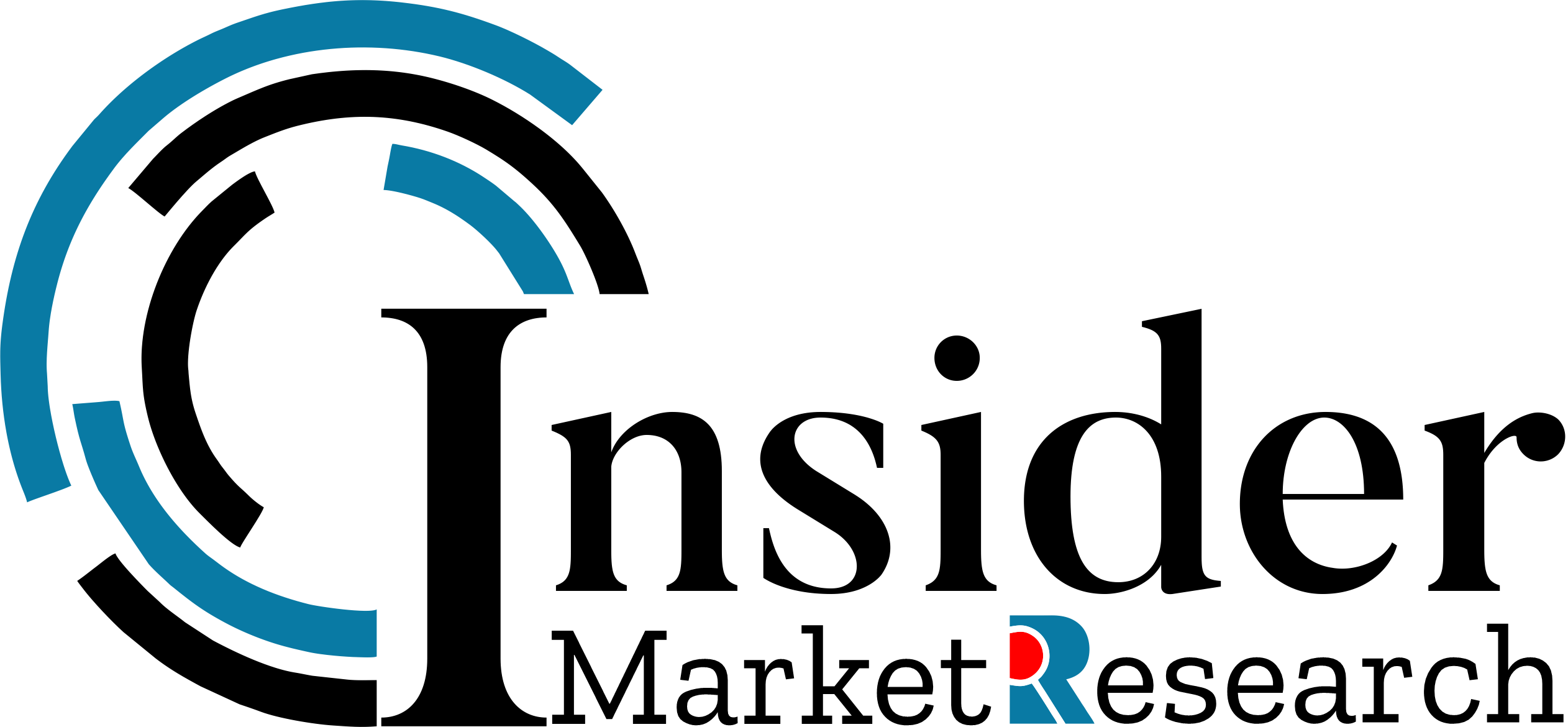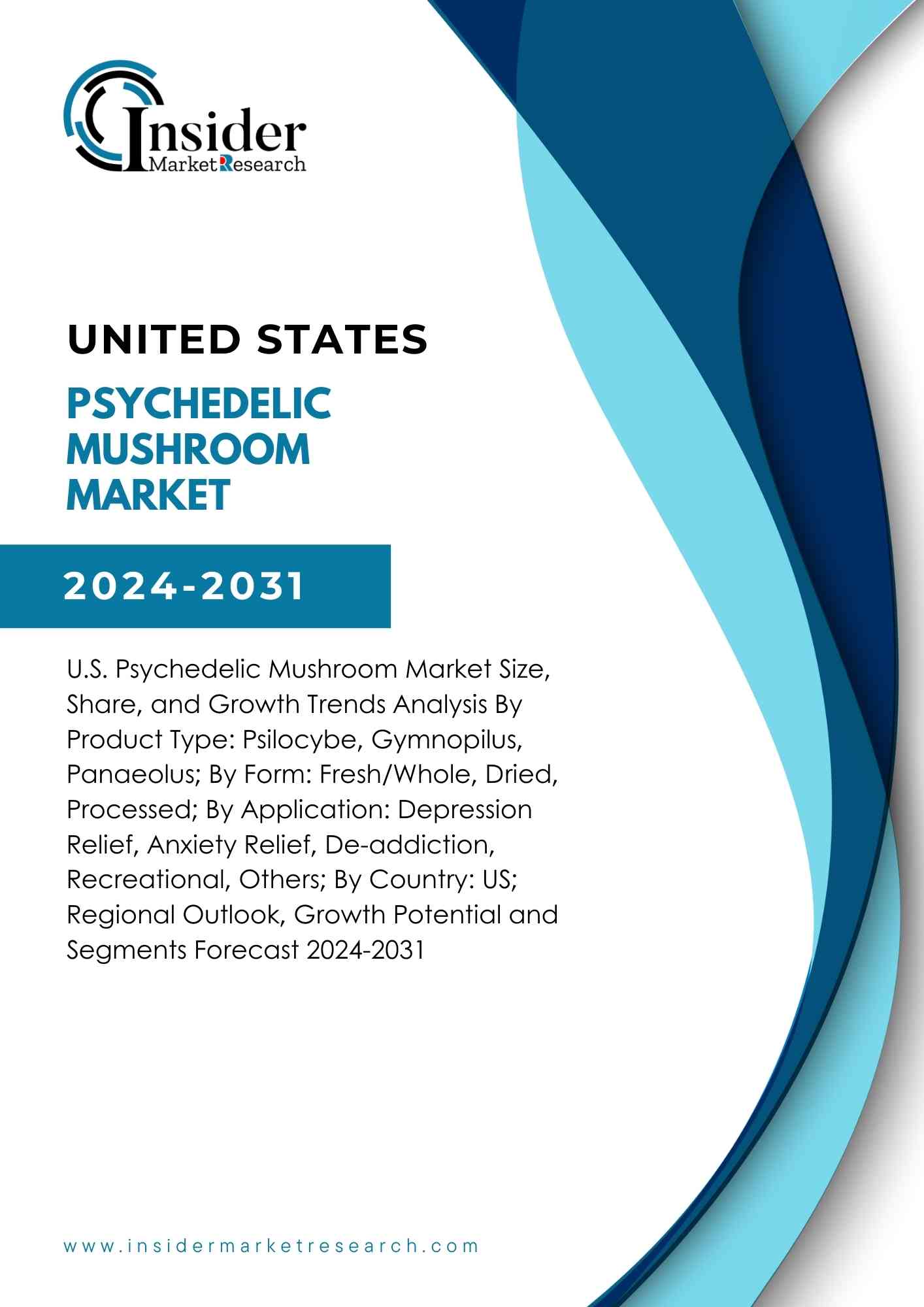Description
The U.S. Psychedelic Mushroom Market size was USD $1.93 billion in 2023 and is projected to grow at a CAGR of 11.17% during the forecast period (2024-2031).
U.S. Psychedelic Mushroom Market: Key Takeaways
-
Regulatory Progress:
The U.S. psychedelic mushroom market is experiencing notable regulatory changes, with several states and municipalities decriminalizing or legalizing psychedelic mushrooms for therapeutic use. This shift is creating a burgeoning market for medical and therapeutic applications, such as treating mental health conditions like depression and PTSD. The evolving legal landscape is expected to drive market growth, as increased regulatory acceptance facilitates research, development, and commercialization of psychedelic mushroom products.
-
Therapeutic Potential:
Psychedelic mushrooms, particularly those containing psilocybin, are gaining attention for their potential therapeutic benefits. Clinical trials and research studies are exploring their effectiveness in treating mental health disorders, including depression, anxiety, and substance abuse. Positive preliminary results are boosting interest from investors, pharmaceutical companies, and healthcare providers, further fuelling market expansion and paving the way for new treatment options.
-
Investment and Market Growth:
The psychedelic mushroom market is attracting significant investment from venture capitalists, pharmaceutical companies, and biotech firms. Increased funding is accelerating research and development, leading to innovations in product formulations and delivery methods. This influx of capital is expected to drive market growth, expand the range of available products, and enhance the overall market infrastructure, positioning the U.S. as a leading player in the psychedelic space.
-
Consumer Awareness and Demand:
Rising consumer awareness and interest in alternative health and wellness solutions are driving demand for psychedelic mushrooms. As more information about the benefits and safety of psychedelic-assisted therapies becomes available, consumer acceptance is increasing. This growing awareness is leading to a more informed market, with consumers seeking out products and services related to psychedelic mushrooms for both therapeutic and recreational purposes, thereby expanding market opportunities.
U.S. Psychedelic Mushroom Market: Overview
The U.S. psychedelic mushroom market is rapidly growing, driven by increasing awareness of psilocybin’s therapeutic potential and shifting societal attitudes. With mental health issues like depression and anxiety on the rise, there is a growing demand for alternative treatments, and psychedelic mushrooms have shown promise in clinical research. This market benefits from a gradual cultural shift, with public opinion becoming more favorable, media coverage raising awareness, and efforts to decriminalize mushrooms gaining traction.
Psilocybin-containing mushrooms, particularly Psilocybe cubensis, dominate the market, accounting for nearly 90% of revenue. Products available include fresh, dried, and processed forms like capsules and tinctures, catering to both therapeutic and recreational use, as well as the popular microdosing trend for mood enhancement. However, the industry faces challenges, such as regulatory complexities due to varying legal statuses across states and issues with ensuring product quality and consistency.
Major players in the market, including Compass Pathways, Shroomland, and Galaxy Treats, are advancing the market through research, development, and commercialization of psilocybin-based therapies. As scientific research progresses and societal acceptance increases, the market is set to expand, though it will need to navigate regulatory hurdles and ensure product reliability to fully capitalize on emerging opportunities.
U.S. Psychedelic Mushroom Market: Growth Drivers
-
Rising Mental Health Awareness:
Increased awareness of mental health issues is driving demand for alternative treatments like psychedelic mushrooms. Conditions such as depression, PTSD, and anxiety have shown positive responses to psychedelic-assisted therapies. According to the National Institute of Mental Health (NIMH), about 21 million U.S. adults experienced at least one major depressive episode in 2020, leading to a surge in research exploring the therapeutic potential of psilocybin, the active compound in psychedelic mushrooms.
-
Expanding Legalization and Decriminalization:
The movement toward legalization and decriminalization of psychedelic mushrooms is gaining traction in the U.S. States like Oregon and Colorado have decriminalized personal use, while others are exploring medical use under regulated settings. Legal reforms encourage market growth as clinical trials and commercial applications increase, making psychedelics more accessible for medical purposes.
-
Increased Research and Clinical Trials:
Government and private sector investment in psychedelic research has been rising. Psilocybin, in particular, is under investigation for various therapeutic uses, including substance use disorders. For instance, Johns Hopkins University received $17 million for psychedelic research in 2021, fueling advancements in the field. Positive results from clinical trials are propelling the U.S. market’s acceptance and expansion.
U.S. Psychedelic Mushroom Market: Restraining Factors
-
Regulatory Hurdles:
Despite growing interest, psychedelic mushrooms face significant regulatory challenges. Psilocybin remains a Schedule I controlled substance at the federal level, meaning it has high potential for abuse and no accepted medical use. The stringent approval processes for drugs containing psychedelic compounds hinder market development and commercialization efforts, slowing down broader access and acceptance.
U.S. Psychedelic Mushroom Market: Opportunity Factors
-
Growth in Personalized Medicine:
Psychedelic-assisted therapies are contributing to the rise of personalized mental health treatments. Tailoring psychedelic dosages based on individual needs could enhance treatment outcomes for various mental health conditions. Companies focusing on personalized therapeutic protocols using psychedelics are likely to benefit from this growing trend.
-
Integration with Telemedicine:
The integration of psychedelic therapies into telemedicine platforms could revolutionize mental health treatment. Virtual therapy sessions, combined with regulated psychedelic use, could expand access to remote populations. The COVID-19 pandemic highlighted the potential of telehealth, and this model could easily be adapted for mental health treatments involving psychedelics, providing new avenues for market growth.
-
Potential for Non-Medical Wellness:
Beyond mental health, psychedelic mushrooms hold potential in the wellness sector for stress relief, creativity enhancement, and spiritual experiences. Wellness retreats and microdosing practices are becoming more popular in areas where psychedelics are legal or decriminalized. This opens doors for the market to expand beyond purely medical applications, capturing a broader consumer base.
U.S. Psychedelic Mushroom Market: Challenges
-
Public Perception and Stigma:
Despite increasing acceptance, psychedelics still carry a stigma associated with their recreational use and historical prohibition. Misinformation and negative perceptions about psychedelic substances limit their mainstream adoption. Shifting public opinion will require extensive education and awareness campaigns, as well as proven success from clinical trials, to reduce resistance from both healthcare professionals and the general public.
U.S. Psychedelic Mushroom Market: Segment Insights
By Product Type:
The U.S. Psychedelic Mushroom Market primarily includes three key product types: Psilocybe, Gymnopilus, and Panaeolus. Psilocybe mushrooms are the most well-known, particularly for containing psilocybin, the primary psychoactive compound used for therapeutic purposes. These mushrooms are widely studied for their potential in treating mental health conditions such as depression and anxiety. Gymnopilus, another psychedelic variety, is less commonly used but gaining recognition for its potential therapeutic effects.
Panaeolus, though not as prevalent as Psilocybe, contains hallucinogenic properties that are increasingly being researched. The rising interest in psychedelic mushrooms is driven by ongoing studies into their medicinal benefits, especially in mental health treatments. Legalization efforts in certain U.S. states have also contributed to increased availability and demand for these products. While Psilocybe mushrooms dominate the market, the inclusion of Gymnopilus and Panaeolus diversifies the product offerings, giving consumers access to a broader range of psychedelic experiences.
By Form:
Psychedelic mushrooms in the U.S. are available in various forms, including fresh/whole, dried, and processed formats. Fresh or whole mushrooms are often preferred by consumers looking for a more authentic, natural experience. They are usually consumed in small doses or microdosed for therapeutic purposes. Dried mushrooms offer extended shelf life and are easier to transport and store.
This form is popular for individuals who prefer to consume mushrooms over a longer period or use them in various preparation methods, such as teas. Processed forms, including capsules, edibles, and tinctures, are gaining traction as they offer controlled dosages and are more palatable for consumers who might not enjoy the raw taste of mushrooms. Processed products also allow for precision in terms of psilocybin content, which is crucial for therapeutic applications. This range of formats caters to a growing and diverse consumer base in the U.S.
By Application:
In terms of application, psychedelic mushrooms in the U.S. are increasingly being explored for their potential in depression relief, anxiety relief, de-addiction, recreational use, and other therapeutic areas. Depression relief is one of the most studied applications, with psilocybin showing promising results in clinical trials as a treatment for treatment-resistant depression. Anxiety relief, particularly for patients with terminal illnesses, has also shown significant benefits in reducing fear and anxiety about death.
De-addiction therapies using psilocybin mushrooms are being investigated for their effectiveness in treating substance abuse disorders, such as alcohol and tobacco addiction. Recreational use, though controversial, is also a significant application, particularly in states where psychedelic mushrooms have been decriminalized. Other applications include enhancing creativity and personal well-being, which are also driving consumer interest in these products. The broad range of applications contributes to the market’s rapid growth.
By Country:
The U.S. psychedelic mushroom market is primarily concentrated in states that have taken steps toward decriminalization or legalization, such as Oregon, Colorado, and California. Oregon was the first state to legalize the therapeutic use of psilocybin in supervised settings, which has paved the way for other states to explore similar measures. Colorado has followed with significant strides toward decriminalization, while California continues to have ongoing discussions regarding legal reforms.
These regions are driving the market’s growth due to progressive legal frameworks and an increased focus on mental health treatments. Other states, such as Washington, are also exploring legalization initiatives, indicating a potential for further market expansion across the country. Consumer demand for natural, alternative treatments for mental health conditions, combined with ongoing regulatory changes, positions the U.S. as a key market for psychedelic mushrooms. However, federal regulations remain a significant challenge to the market’s full development.
U.S. Psychedelic Mushroom Market: Recent Developments
- In May 2023, COMPASS Pathways announced positive results from its Phase IIb clinical trial of COMP360, a psilocybin-based therapy for treatment-resistant depression. The results showed significant improvement in patients’ symptoms, furthering the company’s lead in developing psilocybin-based treatments for mental health disorders. This development positions COMPASS as a pioneer in the rapidly growing psychedelic therapeutics sector.
- In February 2023, Cybin Inc. secured a U.S. patent for its novel psilocybin analog, CYB004. This new chemical entity is designed for improved efficacy and reduced side effects in treating anxiety disorders. The patent protects Cybin’s intellectual property and enhances its competitive advantage in the psychedelic drug development space, while also supporting the company’s growth in clinical research for mental health treatments.
- In September 2022, MindMed entered into a partnership with the University of Basel to explore the therapeutic potential of psychedelic mushrooms for treating mental health disorders. The partnership focuses on advancing the clinical development of psilocybin and other psychedelics for anxiety, depression, and PTSD, marking a significant step in mainstreaming these substances in psychiatric treatments in the U.S.
- In June 2022, the state of Oregon officially opened the application process for licensed psilocybin facilitators under the Psilocybin Services Act. This marked a significant milestone in the U.S. Psychedelic Mushroom Market, as Oregon became the first state to create a regulated market for psilocybin services. This move paved the way for the commercialization of psychedelic mushrooms and set a precedent for other states to follow in developing legal frameworks for therapeutic use.
U.S. Psychedelic Mushroom Market: Key Players
U.S. Psychedelic Mushroom Market features several key players that dominate the industry, including Shroomland; Galaxy Treats; Blissmushrooms; oneupmushroomsbar.com; Psychedelic Mushy; Psilocybin Lounge
U.S. Psychedelic Mushroom Market: Segmentation
Based on Product Type:
- Psilocybe
- Gymnopilus
- Panaeolus
Based on Form:
- Fresh/Whole
- Dried
- Processed
Based on Application:
- Depression Relief
- Anxiety Relief
- De-addiction
- Recreational
- Others

